The 4XX series is a range of status codes that indicate an error on the client’s side. These errors are usually caused by incorrect or invalid requests made by the client, such as requesting a resource that does not exist or inputting wrong authentication credentials.
These types of errors are different from 5XX series errors, which indicate server-side errors. For example, if a website is down due to a server crash, it will result in a 5XX series error. This blog will explore many different 4XX series errors and explain how to handle them. But first we’ll know what 4XX errors are and what they mean.
Overview of 4XX Status Codes
In the internet world, 4XX status codes signify client errors. These error codes are HTTP status responses that web servers use to communicate with search engines and other types of clients, such as web browsers. When a server refuses a client’s request due to an issue, a 4XX status code is often the outcome.
4XX status codes are a pivotal part of how the web operates. They have significant implications for SEO as search engine bots consider these response codes when indexing websites. For example, a website with numerous 4XX errors can suffer in search results because search engines interpret these errors as signs of a poorly maintained site.
The “requested resource” that the client seeks could be anything from a web page to a file, while the “client’s request” refers to the action the client desires to perform on the requested resource. This could involve viewing the resource (a GET request) or submitting data to it (a POST request).
Some common examples of 4XX status codes include 400 bad request, 405 method not allowed, and 408 request timeout. Each of these codes denotes a specific type of error, providing clues to the nature of the problem.
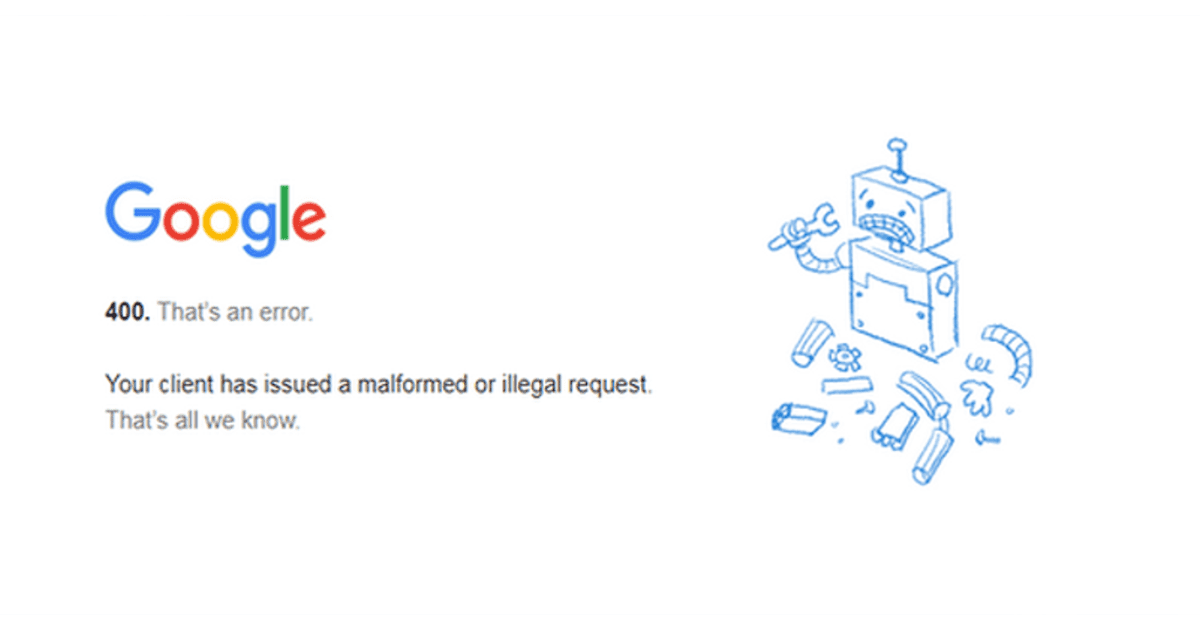
400 Bad Request
Causes
A 400 Bad Request error usually arises when the server cannot comprehend the request due to invalid request message framing.
- This could be due to malformed syntax in the HTTP request method or deceptive request routing, leading to an invalid response by the server.
- Another cause could be that the expect request header field contain data that the server doesn’t understand or expect. For instance, the range request header field might be improperly formatted, or the accept headers could contain values that are incompatible with the web server.
- Also, if a user agent, like a browser or search engine bot, sends a request that includes a message body that the server can’t parse, a 400 Bad Request error may be triggered. One such scenario might involve a POST request with an unsupported media type.
Solution
Addressing a 400 Bad Request error involves identifying the root cause of the problem. Server logs are invaluable resources in this regard as they record all incoming requests and responses, making it easier to trace the faulty request.
If the issue lies with malformed syntax or deceptive request routing, correcting these at the origin server should resolve the issue. If the problem stems from the request header fields, ensure that they adhere to the HTTP protocol standards.
In the case of an unsupported media type, the client should check the “Content-Type” field in the request header and make sure it’s compatible with the server’s specifications.
Remember, rectifying 4XX errors is essential for maintaining a website’s health and its visibility on search engine results. By promptly addressing these issues, you can provide a smoother user experience and enhance your site’s SEO performance.
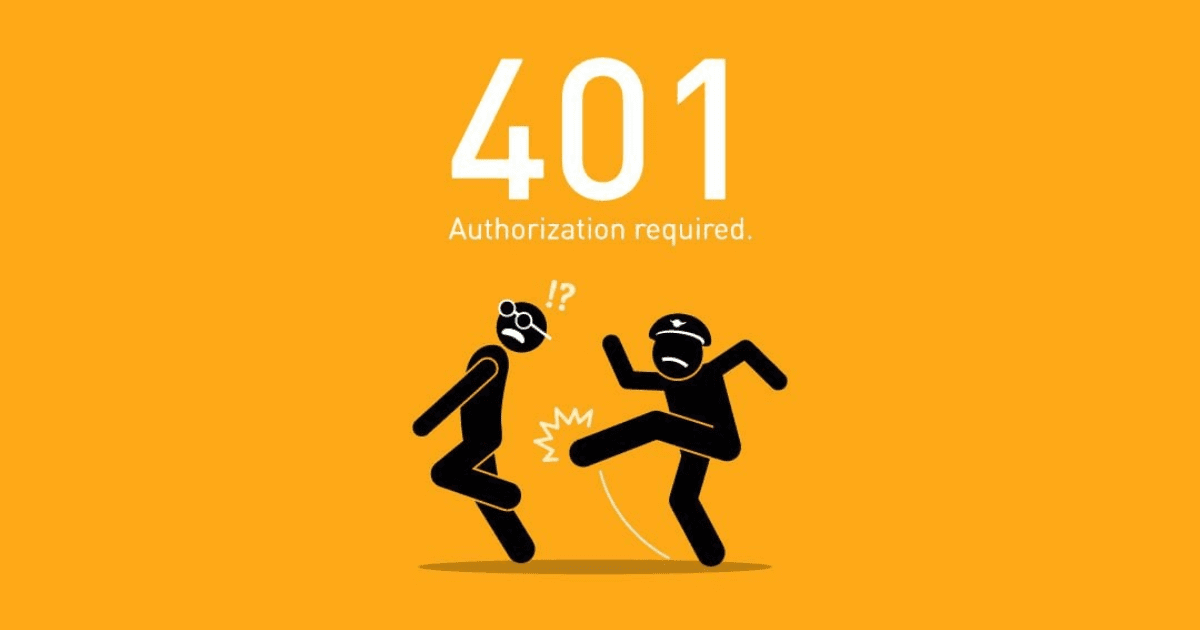
401 Unauthorized: Authentication and Access Issues
Causes
The 401 Unauthorized HTTP status code is a 4XX client error response that appears when valid authentication credentials are not provided for the requested resource. This status code is different from the 403 Forbidden because it indicates that the client must authenticate itself to get the requested response.
A 401 Unauthorized error can occur due to several reasons.
- One of the most common causes is when the user agent, such as a browser or search engine bot, fails to provide valid authentication credentials with the client request.
- The server refuses the request and responds with a 401 Unauthorized status code, indicating that the client’s identity could not be verified.
- An internal configuration error on the web server could also lead to a 401 Unauthorized error. If the server is set up to require user authentication for a resource that should be publicly accessible, it may return this error code mistakenly.
Solution
To resolve a 401 Unauthorized error, the first step is to ensure that the client provides valid authentication credentials with its request. If the client is a browser, this typically involves entering the correct username and password. For search engine crawlers, this might require updating the robot.txt file to allow access.
If an internal server error is causing the problem, correcting the server settings should resolve the issue. This might involve adjusting the server’s authentication requirements or fixing broken internal links that are causing the server to request authentication unnecessarily.
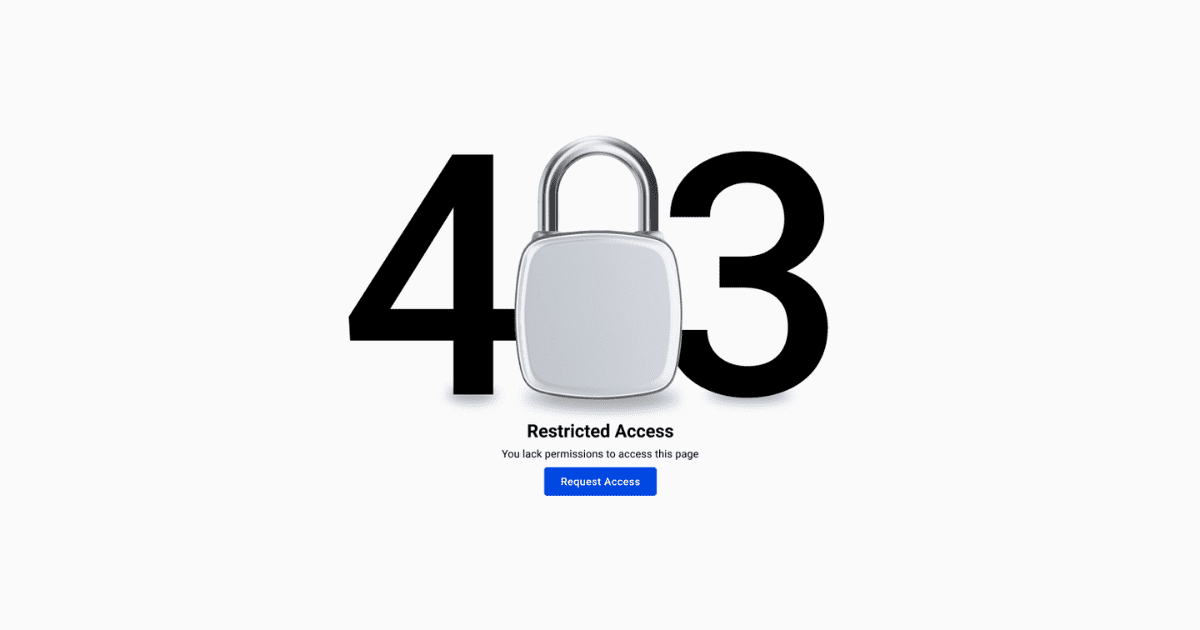
403 Forbidden: Restricted Access and Permissions
Causes
The 403 Forbidden HTTP status code signifies that the server understood the client’s request but refuses to authorize it. Unlike the 401 Unauthorized status code, which implies that authorization is possible with valid authentication credentials, a 403 Forbidden response suggests that the client does not have permission to access the requested resource, regardless of authentication.
A 403 Forbidden error often results from issues related to permissions and access controls. For instance, if a client’s request involves a resource that the server has marked as off-limits, the server will respond with a 403 Forbidden status code.
This error can also occur when the request method is not allowed for the requested resource. For example, if the client sends a POST request to a resource that only supports GET requests, the server might return a 403 Forbidden response.
Solution
Resolving a 403 Forbidden error typically involves adjusting the permissions on the server or the requested resource. If the issue stems from the server restricting access to the resource, changing these settings to grant the client permission should resolve the problem.
If the client’s request uses an unsupported HTTP method, the solution is to send the request using a supported method. For instance, if a POST request results in a 403 Forbidden error, switching to a GET or HEAD request might yield a successful HTTP request.
In some cases, the issue might be with the client’s identity or role. If so, providing the client with the appropriate permissions or roles should rectify the situation. This could involve updating user roles in a content management system or adjusting access controls in a web application firewall.
404 Not Found: Resource Not Available
Causes
In the world of HTTP status codes, a 404 Not Found error is one of the most common 4XX client errors encountered by users and search engine bots. It occurs when the requested resource—be it a webpage, an image, or a file—cannot be found on the server.
A variety of factors can cause this error code.
- The most common reason is that the resource simply does not exist. This usually happens when the URL has been typed incorrectly or if the page has been deleted from the website.
- Broken links are another frequent cause of 404 errors. If an external website links to a page that no longer exists on your server, any user who follows that link will receive a 404 error.
- Occasionally, the issue might lie with deceptive request routing or an internal configuration error on the web server. If the server is misdirected to look for a resource in the wrong location, it might incorrectly return a 404 Not Found error.
Solution
Addressing a 404 Not Found error requires identifying the root cause. If the URL has been mistyped, correcting it should resolve the problem. Similarly, if a page has been deleted, restoring it or redirecting the URL to an existing page can eliminate the error.
For broken links on external websites, consider reaching out to the website owner and asking them to update their link. Alternatively, you can create a redirect from the broken URL to an appropriate page on your site.
If the issue is due to deceptive request routing or internal server configuration, rectifying these at the origin server should clear the error. Checking the server logs can help identify such issues.
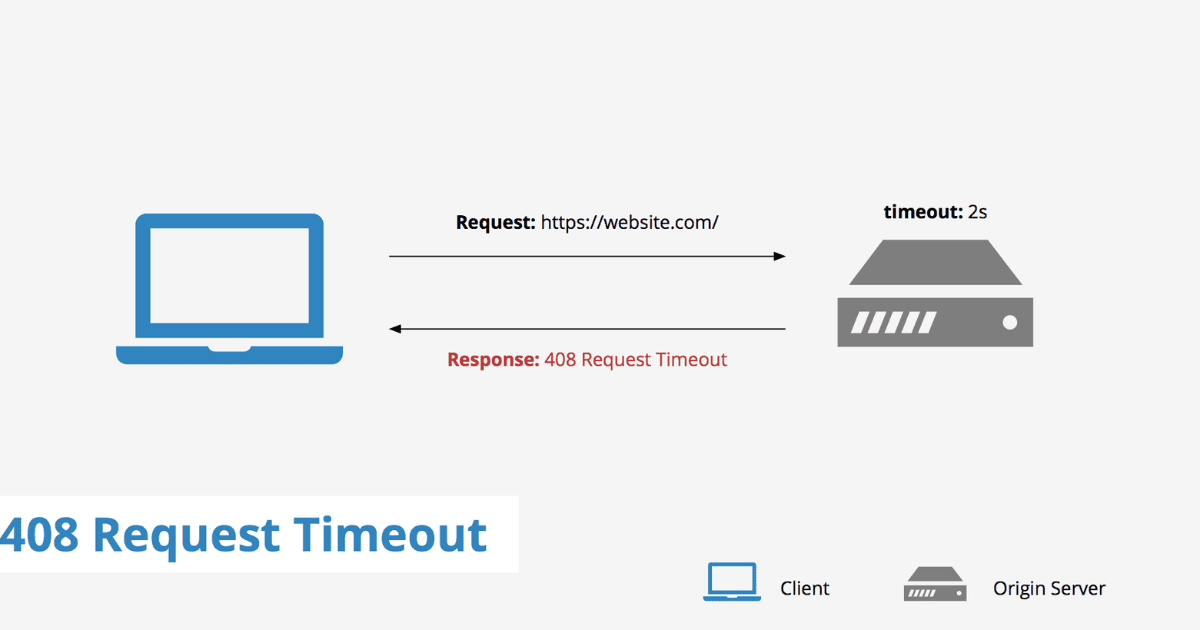
408 Request Timeout: Server Waiting Time Exceeded
Causes
The 408 Request Timeout HTTP status code is another common 4XX error. It indicates that the server did not receive a complete request message from the client within a period it was prepared to wait.
This error often occurs due to network issues between the client and the server. Slow internet connections, network congestion, or unstable network can prevent the client’s request from reaching the server in a timely manner, leading to a 408 Request Timeout error.
Another potential cause is an overloaded server. If the server is receiving more requests than it can handle, it might be unable to process the client’s request within the expected time frame.
Solution
Resolving a 408 Request Timeout error may involve actions on both the client’s and server’s side. For clients, checking their internet connection for stability and speed can help. If network issues are causing the problem, switching to a more reliable network or reducing network congestion might resolve the issue.
On the server side, if the server is overloaded, consider increasing its capacity to handle more requests simultaneously. This might involve upgrading the server hardware or optimizing the server software to process requests more efficiently.
In some cases, the server might be configured to wait too short a time for requests. In such situations, adjusting the server’s timeout settings can help prevent future 408 errors.

410: Gone: Resource No Longer Available
Causes
In the realm of HTTP status codes, a 410 Gone error is a unique type of client error. Unlike a 404 Not Found error where the requested resource might be temporarily unavailable or the request message improperly framed, a 410 Gone status code indicates that the requested resource is permanently unavailable. It has been intentionally removed and will not be available again.
The primary cause of a 410 Gone error is the deletion of the requested resource from the origin web server. This could be due to various reasons such as website restructuring, removal of outdated content, or changes in the website’s URL structure.
Another possible cause is deceptive request routing. If the server is configured to look for a resource in the wrong location, it may mistakenly return a 410 Gone status code.
Solution
Addressing a 410 Gone error requires a different approach than most other 4XX errors. Since the requested resource is permanently removed, the solution doesn’t involve restoring the resource.
Instead, the best practice is to update all internal and external links that point to the deleted resource. For internal links, this involves scanning your website for any references to the removed page and updating them to point to a relevant existing page.
For external links, consider reaching out to the owners of the external websites and request them to update their links. Alternatively, setting up a redirect from the deleted URL to an existing page can help preserve SEO value and prevent users from encountering the 410 error.
413: Request Entity Too Large
Causes
A 413 Request Entity Too Large error is an HTTP status code indicating that the server is unwilling or unable to process the client’s request because the request entity (the data in the body of the request) is larger than the server is configured or able to handle.
- This error often occurs when the client sends a POST request with a large message body, such as a file upload. If the size of the uploaded file exceeds the server’s maximum limit, the server will respond with a 413 Request Entity Too Large status code.
- Another potential cause is when the client sends too many requests to the server at once, leading to a situation akin to a ‘429 Too Many Requests’ error, but with the added complication of large data volumes in each request.
Solution
Resolving a 413 Request Entity Too Large error involves either reducing the size of the request entity or increasing the server’s limit.
- On the client side, if the issue is due to a large file upload, consider compressing the file or splitting it into smaller parts before sending the request.
- On the server side, you can adjust the server’s configuration to increase the maximum allowed size of the request entity. Be cautious, though, as allowing larger requests can consume more server resources and potentially impact server performance.
If the client is sending too many requests at once, implementing rate limiting can help prevent future 413 errors. Rate limiting controls the number of requests a client can send to the server within a specific timeframe, helping to manage server load effectively.
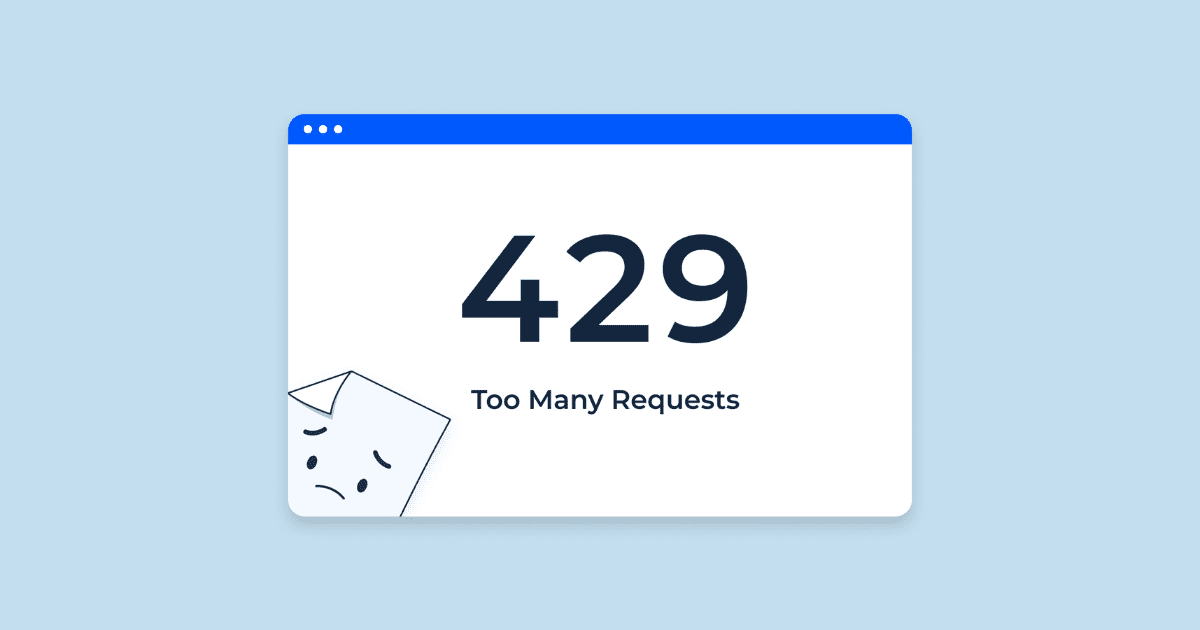
429: Too Many Requests
Causes
A 429 Too Many Requests error is an HTTP status code that indicates the client has sent too many requests in a given amount of time (“rate limiting”). This response code is part of the HTTP/1.1 standard and is commonly used to control traffic to a web server.
The primary cause of a 429 Too Many Requests error is when the client, whether it’s a user or a search engine bot, sends more requests than the server can handle or is configured to allow within a specific timeframe. This could be due to an overly enthusiastic SEO search engine bot, a user rapidly refreshing a page, or even a distributed denial-of-service (DDoS) attack.
Solution
Addressing a 429 Too Many Requests error requires actions on both the client’s and server’s side. For clients, reducing the frequency of requests can help. If the issue is due to an aggressive SEO search engine bot, adjusting its crawl rate in the Google Search Console might resolve the problem.
On the server side, if the server is overloaded, increasing its capacity to handle more requests simultaneously could be beneficial. This might involve upgrading the server hardware or optimizing the server software to process requests more efficiently.
In some cases, the server might be configured with overly strict rate limiting. In such situations, adjusting the server’s rate-limiting settings can help prevent future 429 errors.
451 Unavailable For Legal Reasons
Causes
A 451 Unavailable For Legal Reasons is an HTTP status code indicating that the server is denying access to the resource as a consequence of a legal demand. The error is named after Ray Bradbury’s dystopian novel “Fahrenheit 451”, which revolves around censorship.
The main cause of a 451 error is when a requested resource contains content that has been deemed illegal by a governing body. This can include copyright-infringing material, defamatory content, or information that violates privacy laws.
Solution
Resolving a 451 Unavailable For Legal Reasons error often lies outside the technical realm and within the legal jurisdiction.
If you’re a website owner and your content has been blocked due to a legal dispute, consulting with a legal professional is recommended.
If the content was blocked mistakenly, providing evidence to the relevant authorities can help lift the restriction. However, if the content indeed violates laws, removing the offending material and complying with the law is the only viable solution.
For users who encounter a 451 error, there’s not much that can be done unless the website owner or the legal authority lifts the restriction. Users can try accessing the content from different geographical locations where the content might not be restricted. However, this should be done while respecting the intent of the law.
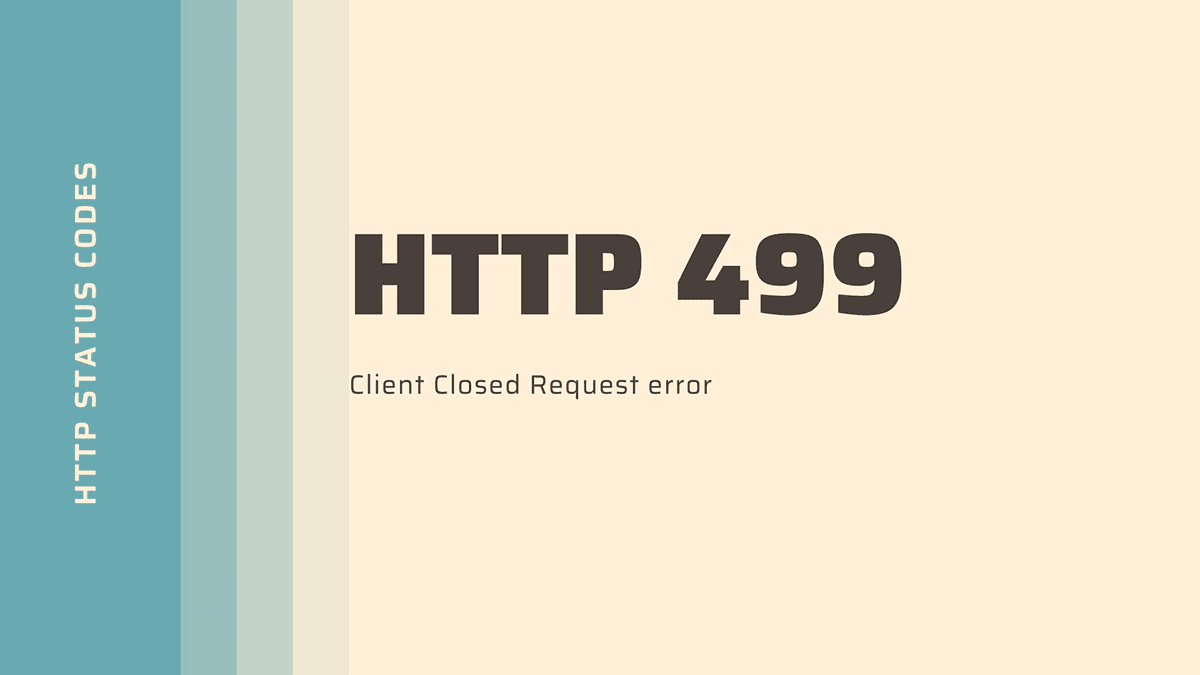
499: Client Closed the Connection
Causes
The 499 status code is a non-standard HTTP status code used to denote that the client closed the request connection before the server could respond. This error often finds use in Nginx logs when the client has closed the connection for various reasons.
One primary cause of a 499 error is network instability. If the client’s network connection is unstable, it might disconnect before the server can deliver its response. Similarly, slow internet connections might cause the client to time out and close the connection prematurely.
Another common cause is impatient users. If a web server takes too long to respond, a user might decide to stop waiting and close the webpage, resulting in a 499 status code in the server logs.
Solution
Addressing a 499 Client Closed the Connection error requires identifying the root cause. If network instability is causing the problem, clients can try improving their network connection. For slow internet connections, upgrading to a faster connection or reducing network congestion could resolve the issue.
On the server side, optimizing the server to respond faster can help prevent users from closing the connection prematurely. This could involve improving the server’s hardware or optimizing the server software or the website’s code to process requests more efficiently.
Impact on User Experience and SEO
- User Experience: 4XX errors can significantly harm the user experience. When users encounter these errors, they are unable to access the requested resource, leading to frustration and potentially causing them to leave the website.
- Loss of Trust: Frequent errors can cause users to lose trust in a website. They might perceive the site as unreliable or unprofessional, which can hurt the brand’s reputation.
- SEO Impact: Search engines like Google strive to provide the best user experience, and serving broken links or inaccessible pages negatively affects this goal. Thus, 4XX errors can harm a website’s search engine rankings.
- Crawl Budget: For large websites, search engine crawlers have a limited “crawl budget.” If they waste time crawling pages that return 4XX errors, they might not index other, more important pages.
- Link Equity: If a linked page returns a 4XX error, any link equity that would have been passed to that page is lost, which can impact the website’s overall SEO performance.
- Mobile-First Indexing: With Google’s shift towards mobile-first indexing, ensuring your website is free from 4XX errors on both desktop and mobile versions is crucial for maintaining visibility in search results.
- User Retention: A user-friendly site is likely to have better user retention. However, regular encounter with 4XX errors can discourage users from returning to the site.
- Conversion Rate: 4XX errors on critical pages, like the checkout or contact page, could significantly hurt the conversion rate, directly impacting the website’s bottom line.
- Website Traffic: A drop in search engine rankings due to 4XX errors can lead to reduced organic traffic, affecting the website’s reach and visibility.
- Website Maintenance: Regularly checking for and fixing 4XX errors should be part of website maintenance. It helps ensure the website remains user-friendly and optimized for search engines.

Best Practices for Handling and Resolving 4XX Errors
You have to be on the top of your technical seo game to avoid 4XX errors. Here are some best practices for handling and resolving these errors:
- Monitor Server Logs: Regularly reviewing server logs can help identify and address 4XX errors promptly. These logs provide a wealth of information, such as the error code, the requested resource that caused the error, and other relevant details.
- Use SEO Tools: Utilize tools like Google Search Console to monitor your website’s health. These tools can detect broken links, crawl errors, and other issues that result in 4XX status codes.
- Implement Proper Redirects: If a page has been moved or deleted, ensure to set up a proper redirect to an existing page. This prevents users and search engine bots from encountering a 4XX error.
- Optimize Request Message Framing: Ensure all HTTP requests are correctly framed. An invalid request message framing can lead to errors like 400 Bad Request.
- Manage Server Load: Implement rate limiting to manage the number of requests a client can send within a specific timeframe. This can prevent errors like 429 Too Many Requests.
- Fix Broken Links: Regularly scan your website for broken internal and external links. Fixing these links can reduce the occurrence of 4XX errors.
- Handle Authentication Correctly: For pages that require user authentication, ensure that the server is correctly configured to request valid authentication credentials. Misconfiguration can lead to a 407 Proxy Authentication Required error.
- Ensure Compatibility: Make sure your server supports the HTTP version used in the client’s request. Incompatibility can result in a 505 HTTP Version Not Supported error.
- Keep Content Legal: Avoid hosting content that could be deemed illegal in certain jurisdictions to prevent a 451 Unavailable For Legal Reasons error.
- Improve Server Response Time: Optimizing your server to respond faster can prevent clients from closing the connection prematurely, reducing the occurrence of 499 errors.
Conclusion
Understanding and addressing 4XX errors is crucial for maintaining a user-friendly, SEO-optimized website. By monitoring server logs, utilizing SEO tools, managing server load, and implementing proper redirects, you can significantly reduce these errors.
The key to resolving a 4XX error lies in understanding the cause behind each status code. With the right knowledge and tools, you can ensure your website provides a seamless experience for users and search engine bots alike, ultimately driving more traffic, engagement, and conversions.







